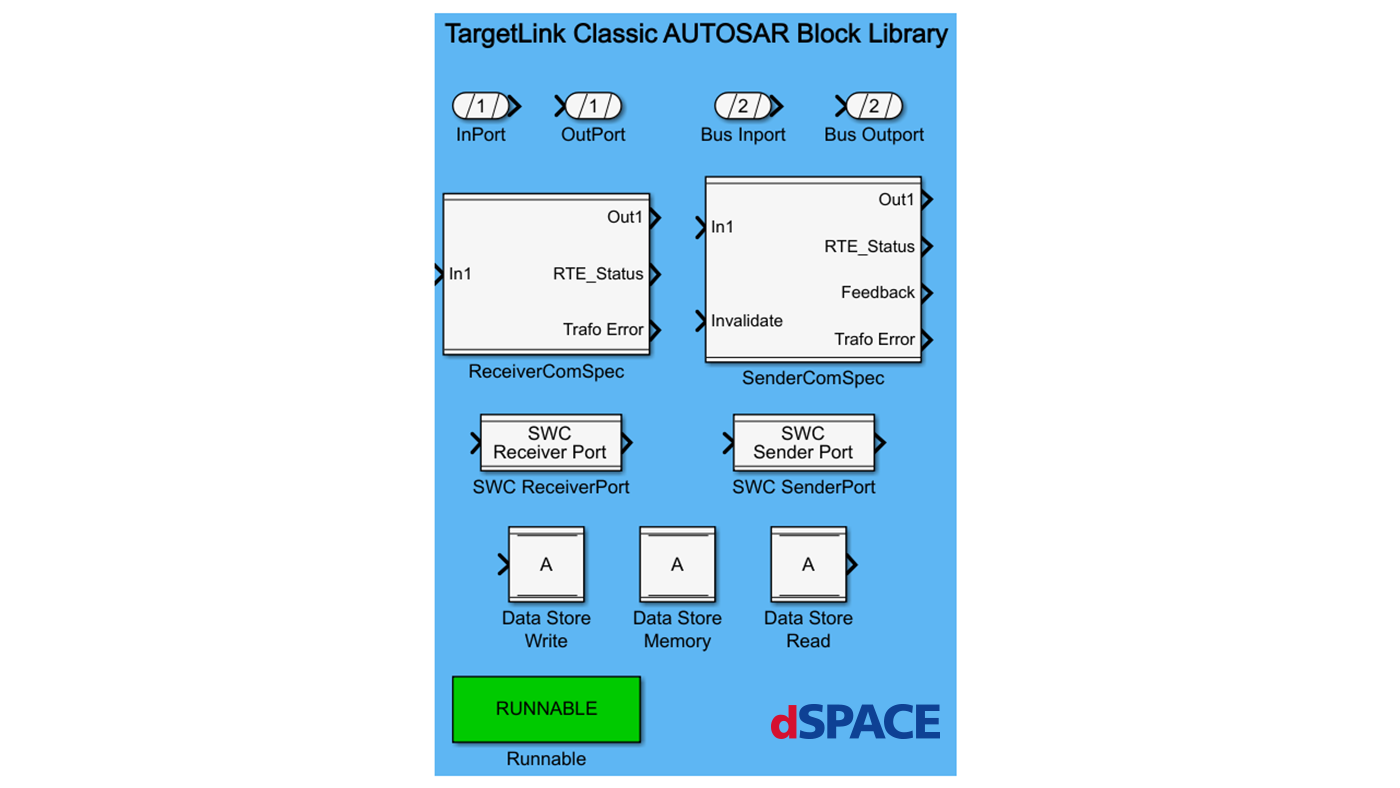
Classic AUTOSAR Support
TargetLink supports the vast majority of Classic AUTOSAR communication mechanisms and generates genuine RTE API function calls.
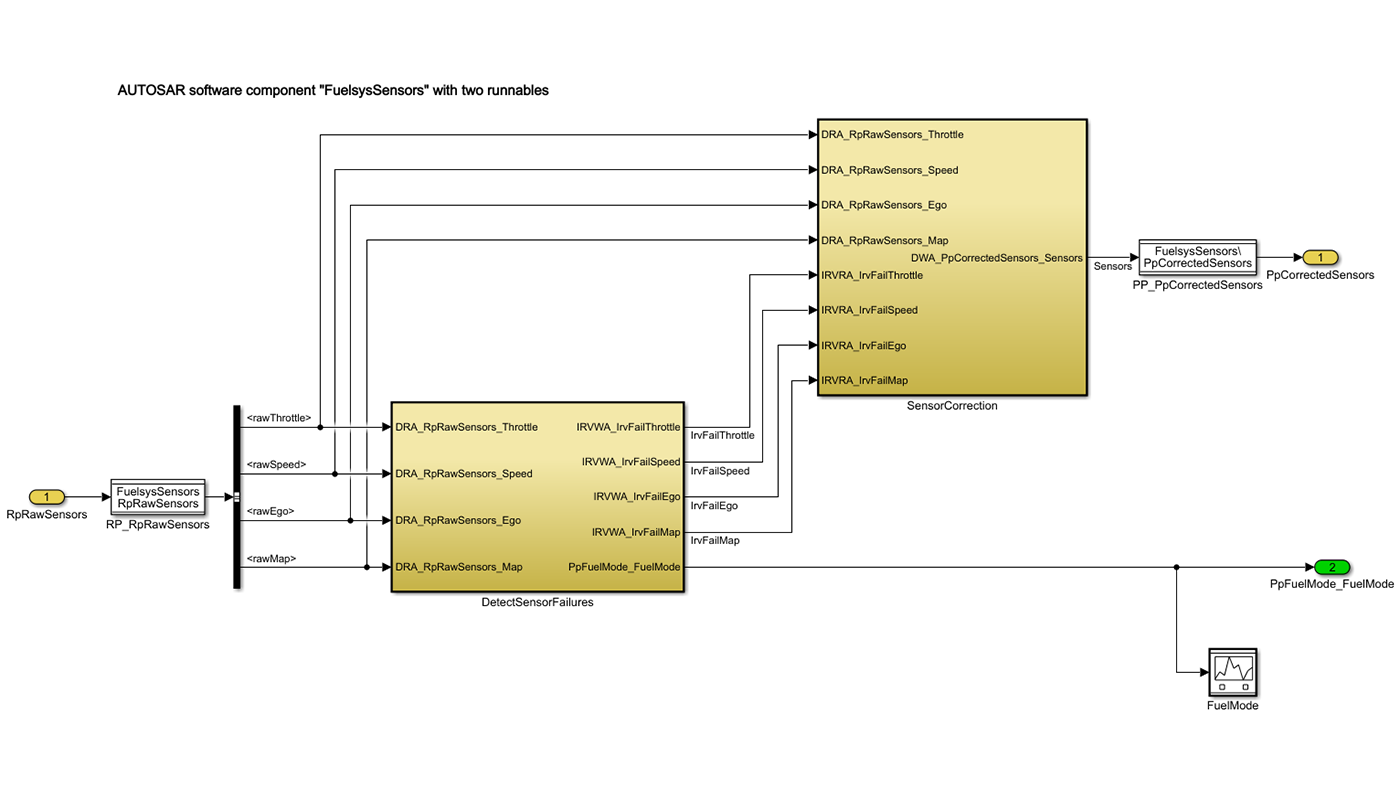
Designing Classic AUTOSAR Software Components
The TargetLink Classic AUTOSAR Block Library provides Classic AUTOSAR structure elements, for example, runnables, ports, and communication interfaces, for modeling purposes. To define a Classic AUTOSAR runnable, a Function block specified as a Classic AUTOSAR runnable is used in a subsystem, similar to regular TargetLink functions.
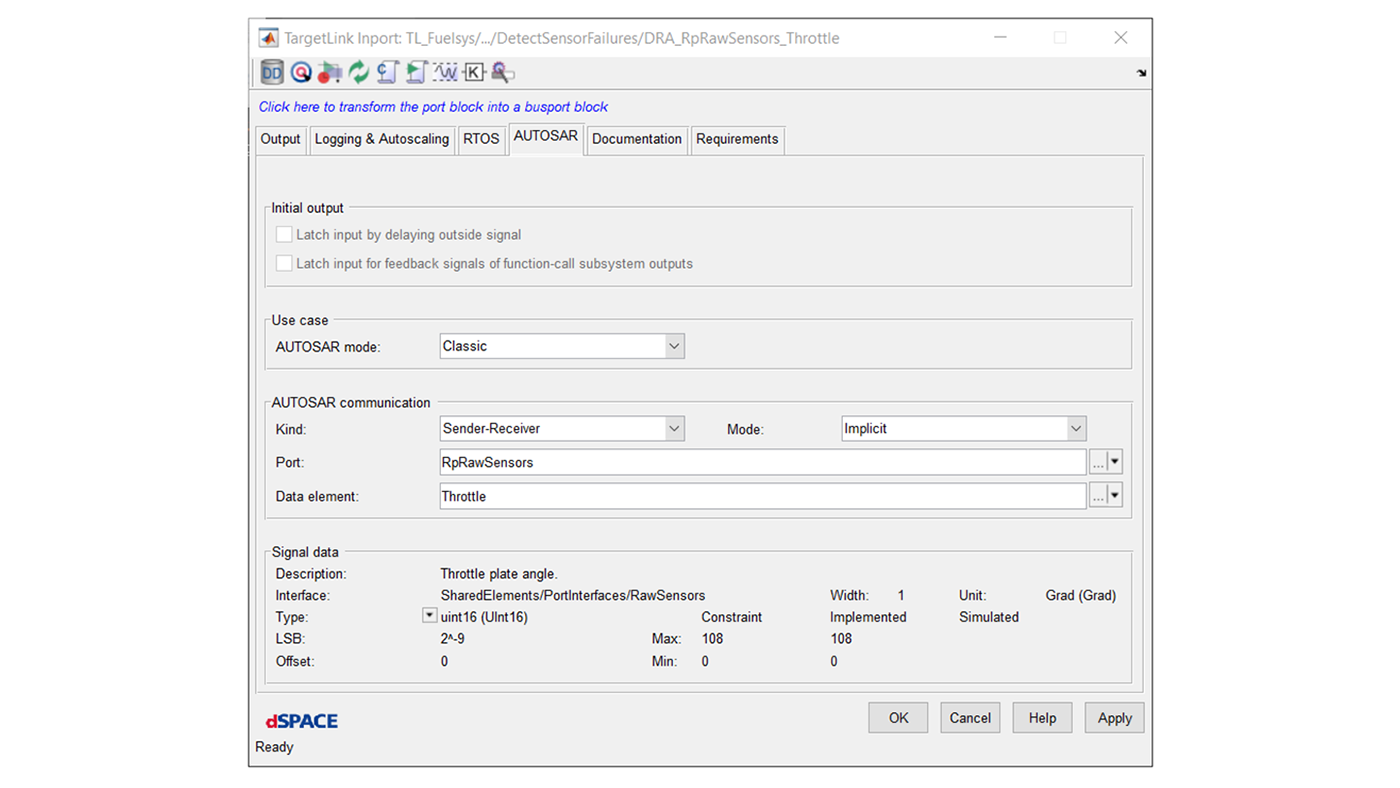
The TargetLink InPort and OutPort blocks are used to define the data exchange between the runnables of one or more software components. Developers specify properties on the block level and via the TargetLink Data Dictionary.
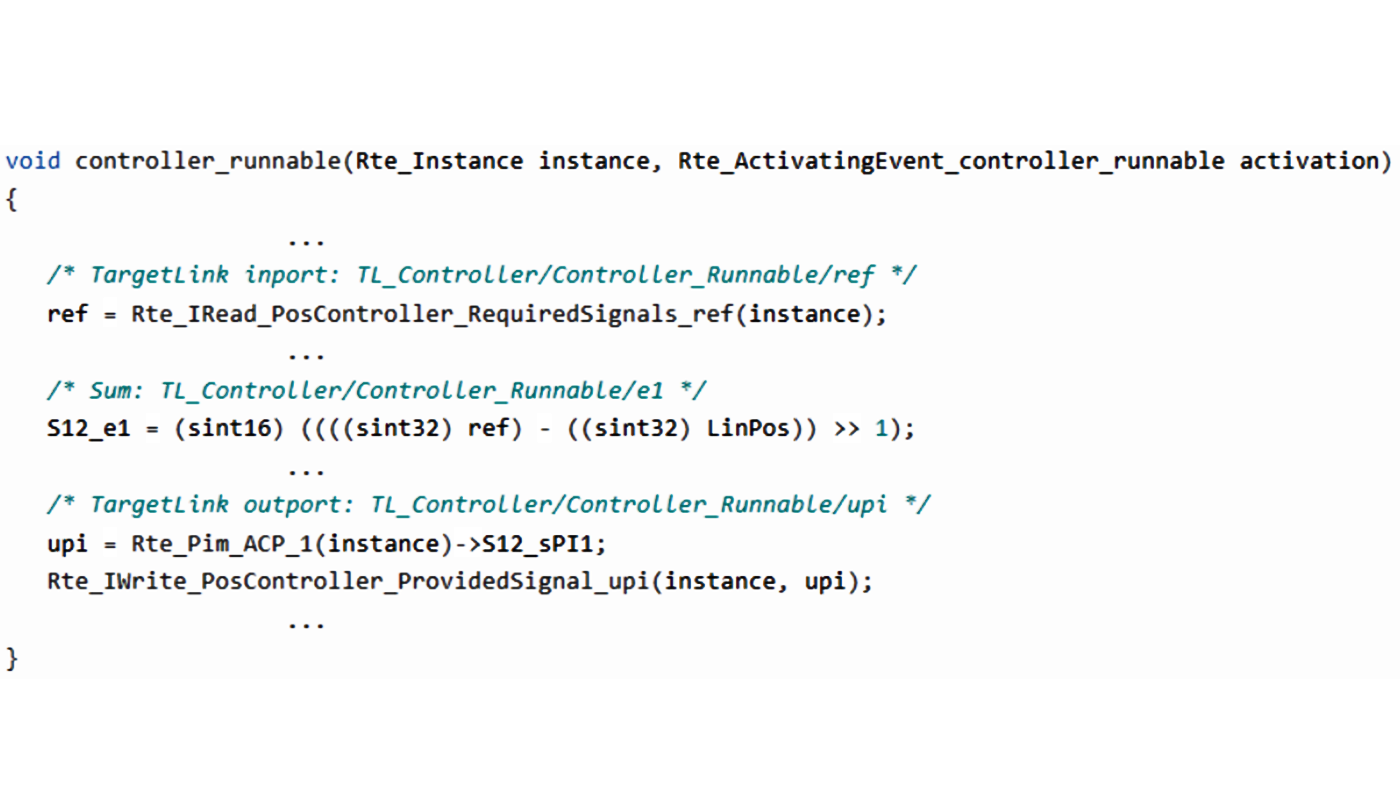
Generating Classic AUTOSAR-Compliant Code
TargetLink generates production code for Classic AUTOSAR software components. Moreover, TargetLink provides special options allowing for Classic AUTOSAR optimizations. Runnables are implemented as C functions, and Classic AUTOSAR communication mechanisms are implemented as RTE API function calls according to the Classic AUTOSAR standard. The same model can be used to generate Classic AUTOSAR-compliant code and standard TargetLink code.
Simulating and Testing Classic AUTOSAR Software Components
TargetLink simulates Classic AUTOSAR software components in all simulation modes. Multiple software components can be simulated in one simulation run. The communication between software components is simulated to the extent supported by the Simulink® design environment. For testing purposes in SIL and PIL simulation mode, TargetLink generates a stub RTE that maps the RTE API function calls in the application with software component code to global variables and generates access functions to global variables.
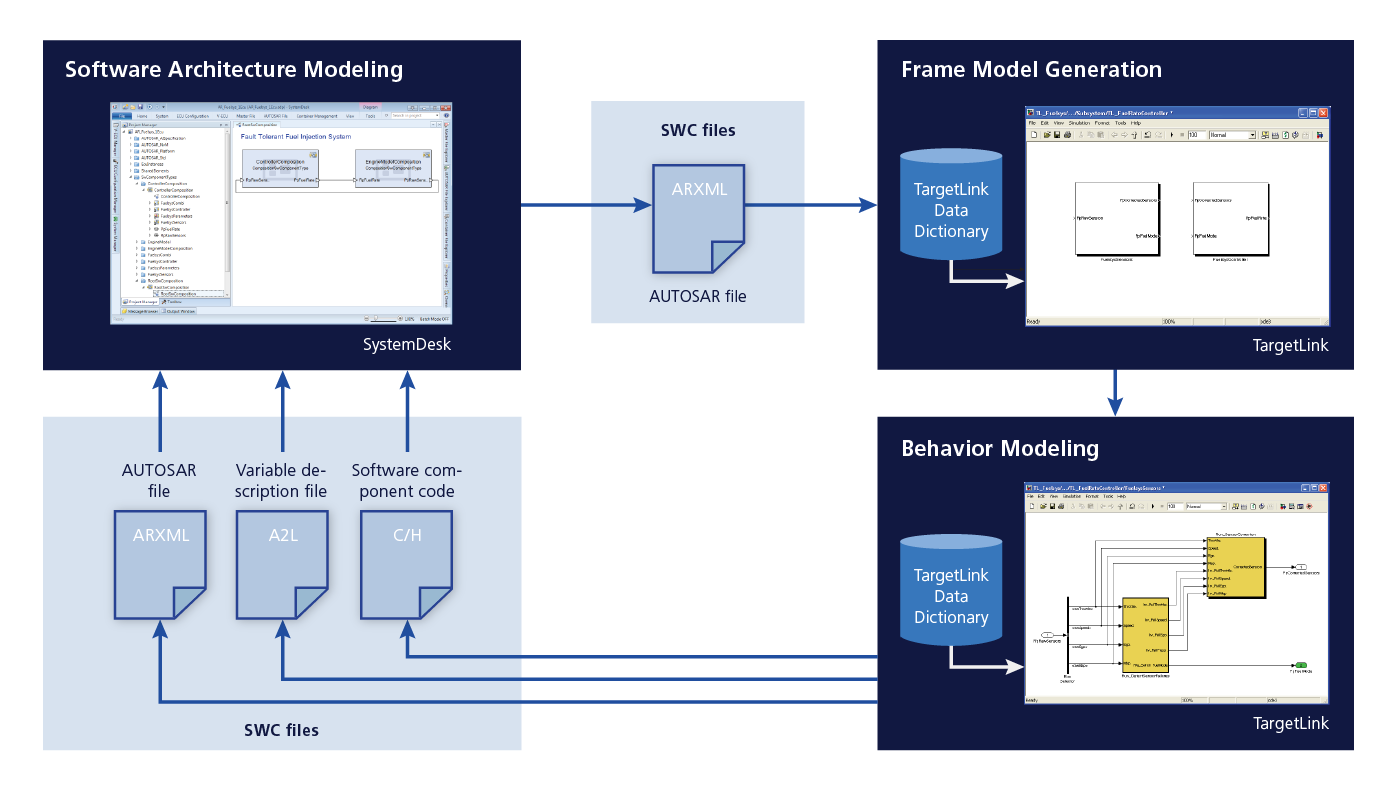
TargetLink in a Classic AUTOSAR Tool Chain
For Classic AUTOSAR software development, TargetLink is typically combined with an AUTOSAR architecture tool such as SystemDesk. A software architecture with multiple components is specified in the architecture tool, while TargetLink is used to design and implement the individual software components. The two tools exchange data via ARXML files. Both a top-down approach (starting with the software architecture) and a bottom-up approach (starting with a TargetLink function model) can be used for Classic AUTOSAR round trips. This AUTOSAR round trip can be simplified and automated using dSPACE AUTOSAR Compare, which lets you compare and manually or automatically merge your AUTOSAR artifacts.
Helpful Features and Utilities for Classic AUTOSAR (Examples)
| Feature/Utility | Description | Benefit |
|---|---|---|
| Importing and exporting software component descriptions. |
|
Seamless Classic AUTOSAR development process with a tool such as SystemDesk and dSPACE AUTOSAR Compare. |
|
Generating a Classic AUTOSAR frame model. |
|
Easy and convenient transfer of AUTOSAR specifications into the TargetLink model. |
| Migrating standard TargetLink models to Classic AUTOSAR. |
|
Highest flexibility when reusing existing software parts. |
| Classic AUTOSAR Modeling Guide | Explains how to model and generate code for Classic AUTOSAR software components. | Support while developing Classic AUTOSAR software components with the model-based development approach of TargetLink. |
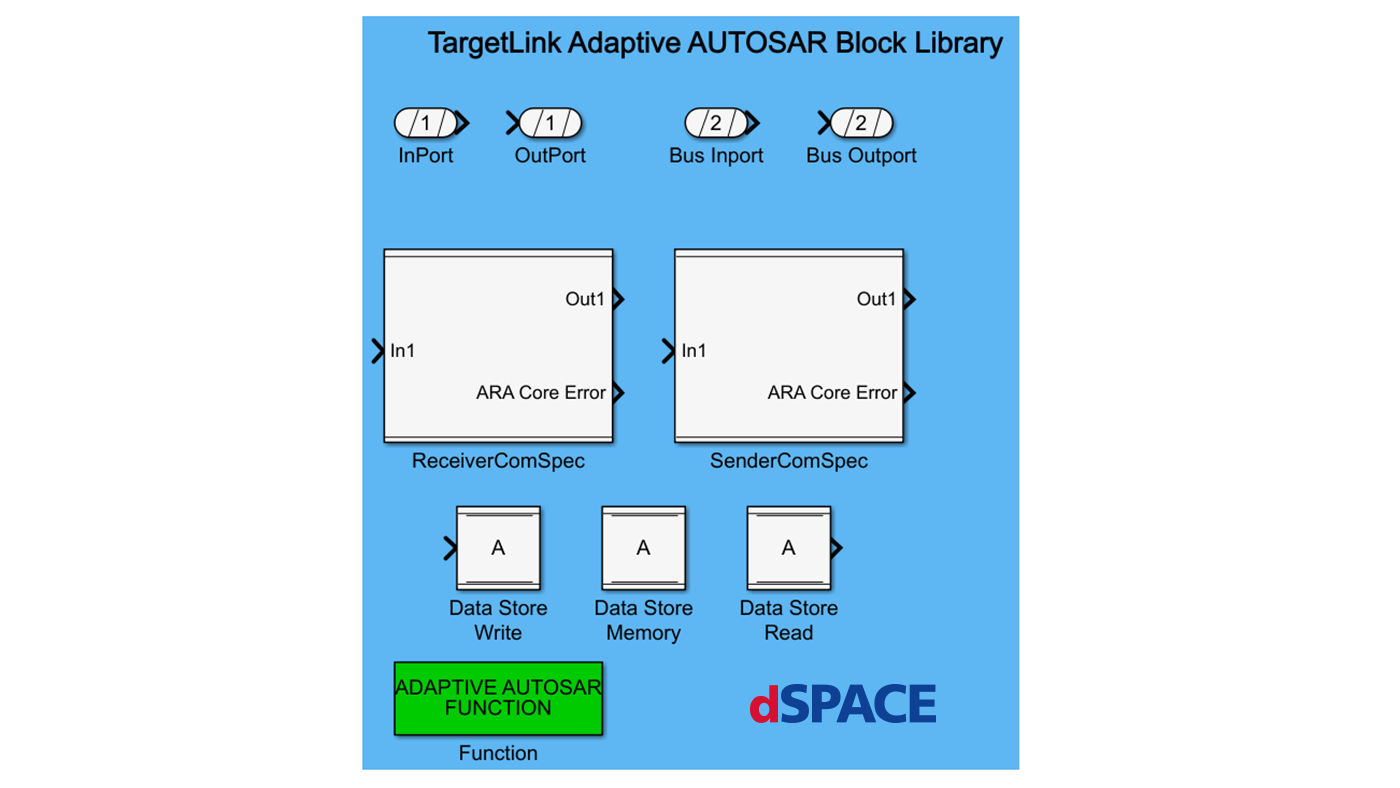
Adaptive AUTOSAR Support
TargetLink supports selected features of Adaptive AUTOSAR, for example:
- Importing and exporting ARXML files with elements defined by the functional cluster ara::com.
- Importing ARXML files with elements defined by the functional cluster ara::per.
- Modeling select parts of service-based communication as described by the functional cluster ara::com.
- Modeling select parts of accessing persistent memory as described by the functional cluster ara::per.
- Modeling and simulating error handling as described by the functional clusters ara::com and ara::per.
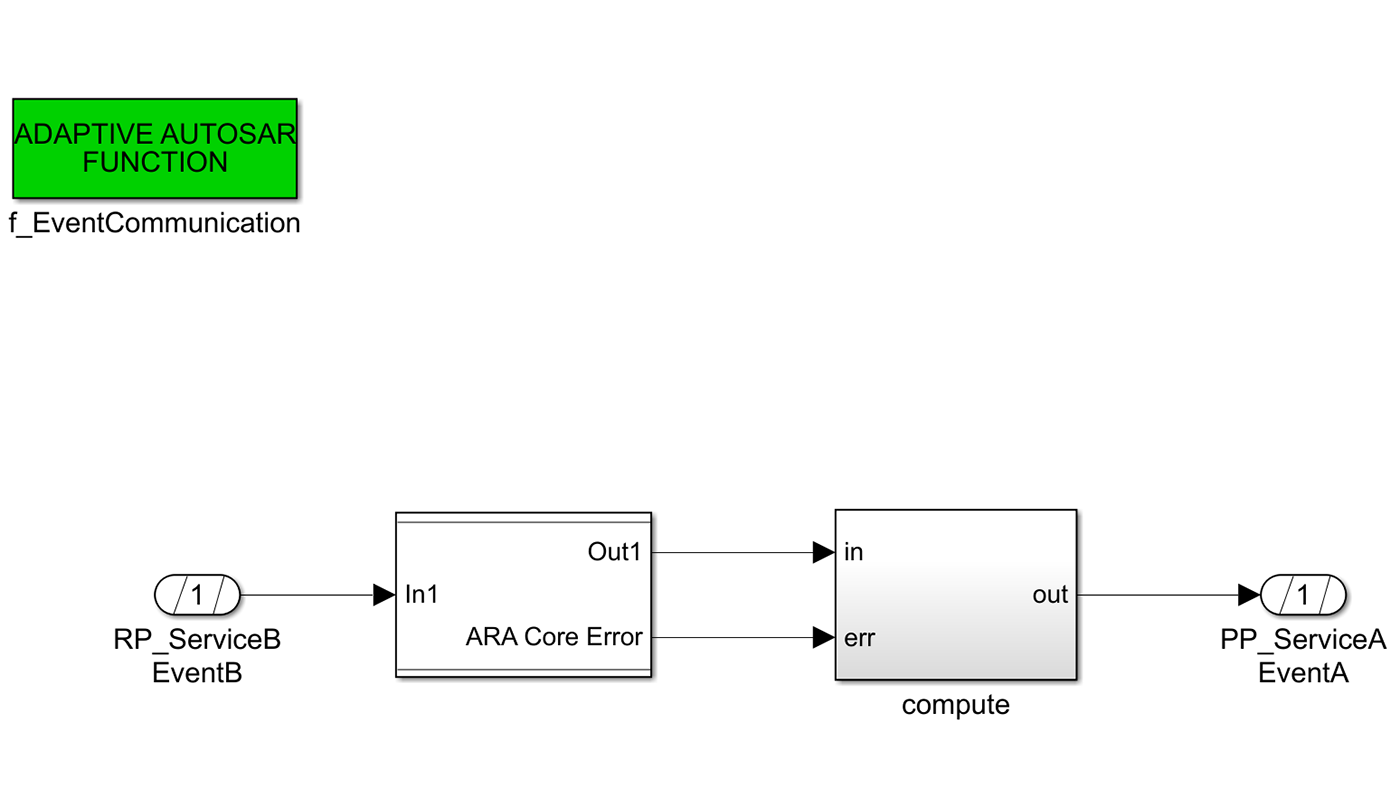
Designing Adaptive AUTOSAR Applications
TargetLink supports the model-based development of functional parts of adaptive applications. It provides different model elements for you to model the functionalities.
The following uses cases are supported to model communication according to ara::com:
- Accessing fields as a service consumer or service provider.
- Sending or receiving events.
- Calling or implementing a method.
- Modeling and simulating error handling
In addition, TargetLink supports the modeling of persistent data access, i.e., reading and writing key-value pairs from key-value storage, according to ara::per.
Generating Code for Adaptive Applications
TargetLink generates Adaptive AUTOSAR functions from subsystems specified for Adaptive AUTOSAR. The Adaptive AUTOSAR function is a TargetLink-specific C++ function representing a partial functionality of an adaptive application. This function can be called in the C++ code of an adaptive application.
Simulating and Testing Adaptive AUTOSAR Models
TargetLink simulates Adaptive AUTOSAR models in MIL and SIL simulation mode. While building the simulation application for SIL simulation, TargetLink uses preprocessor macros and conditional compilation. This allows the simulation of the Adaptive AUTOSAR functions directly in TargetLink without the need of Adaptive AUTOSAR middleware. In addition, TargetLink supports modeling error handling during communication as specified by Adaptive AUTOSAR.
Helpful Features and Utilities for Adaptive AUTOSAR (Examples)
| Feature/Utility | Description | Benefit |
|---|---|---|
| MIL and SIL simulation | Directly simulating the Adaptive AUTOSAR function in TargetLink without Adaptive AUTOSAR middleware. | Easily simulate and validate your Adaptive AUTOSAR functionality in the development environment. TargetLink allows for comfortable and straight-forward testing without setting up, configuring, and maintaining a build chain for Adaptive AUTOSAR. |
| Modeling of select Adaptive AUTOSAR functional clusters | Model persistent data access as defined by ara::per by reading and writing key-value pairs from a key-value storage. Modeling communication as defined by ara::com:
|
Convenient and well-known modeling similar to Classic AUTOSAR modeling in TargetLink. |
| Adaptive AUTOSAR Modeling Guide | Explains how to model and generate code according to Adaptive AUTOSAR for the integration into adaptive applications. | Support while developing functional parts of adaptive applications with the model-based development approach of TargetLink. |
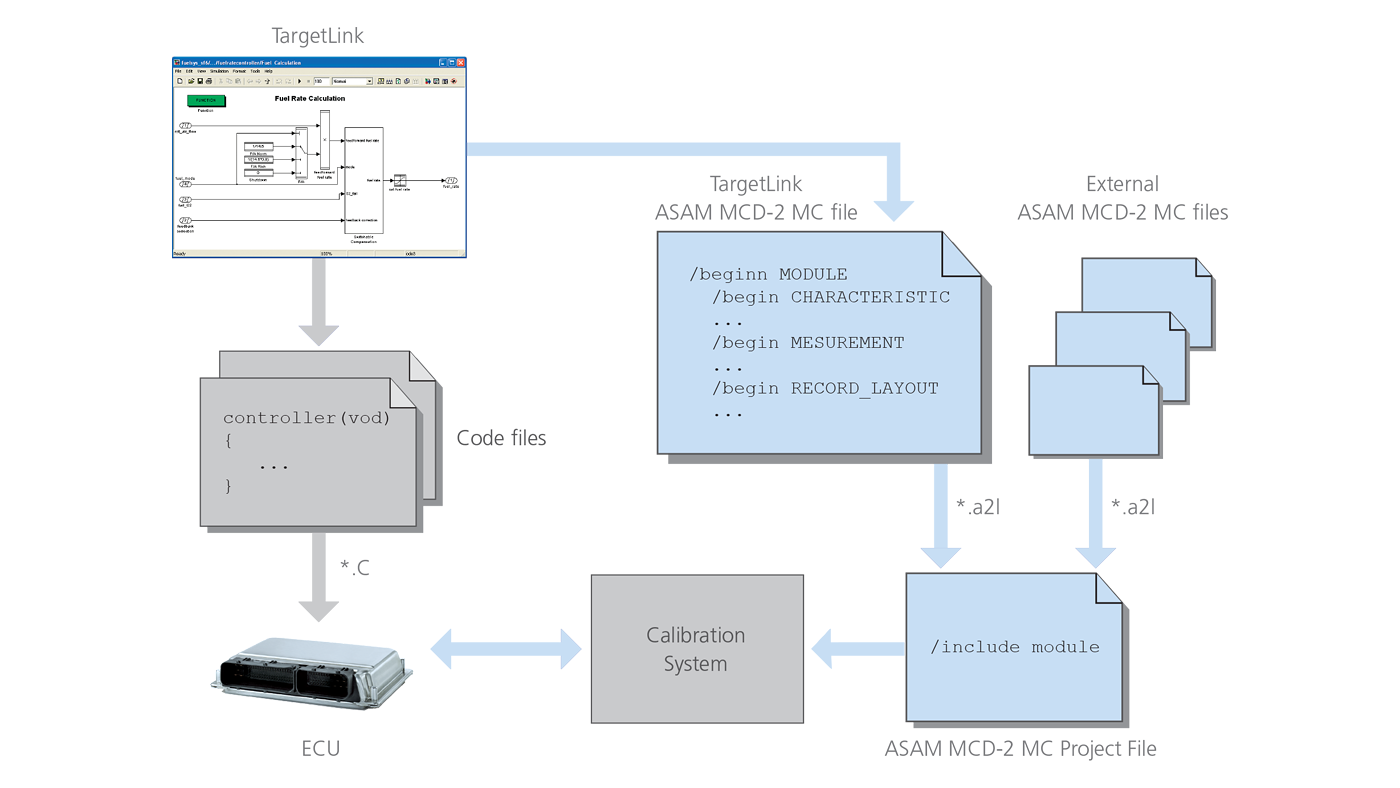
Calibration File Generation
Another important requirement for a code generator is to have close links with calibration systems. ECU code must be prepared for parameter fine-tuning by making calibratable or measurable variables accessible to a calibration system. TargetLink supports the generation of the standardized ASAM MCD-2 MC file format (formerly ASAP2) via the Data Dictionary to make the variables and parameters available for ECU calibration. All major calibration tools support this standard. Because the C code and the ASAM MCD-2 MC file are generated with the same data basis, they are always consistent. This eliminates another error source, and streamlines the development process. TargetLink offers several predefined variable classes for calibratable and measurable variables. You can also specify your own classes, ensuring that each class holds suitable attributes for calibration and/or measurement.
| AUTOSAR | As a de-facto standard for automotive E/E architectures, AUTOSAR contains specifications for communication interfaces between application functions and basic system functions. The TargetLink AUTOSAR Module makes TargetLink’s modeling, simulation and code generation features available for designing Classic AUTOSAR software components (SWCs). Furthermore, TargetLink 5.0 supports select features of Adaptive AUTOSAR Release 19-03. AUTOSAR Adaptive Platform, also called Adaptive AUTOSAR, is a standard based on a service-oriented architecture that aims at on-demand software updates and high-end functionalities. |
| FMI | The Functional Mock-up Interface (FMI) is an open standard for the tool-independent exchange and integration of plant models that are provided by various tool vendors. Functional Mockup Units (FMUs) can be exported from TargetLink to simulation environments that support FMI. |
| ASAM MCD-2 MC (ASAP2) | Internal ECU variables in measurement and calibration can be defined in the description format ASAM MCD-2 MC. Because a code generator also needs to have close links with calibration systems, TargetLink can export calibration data as ASAM-MCD 2MC file for calibration tools. |


